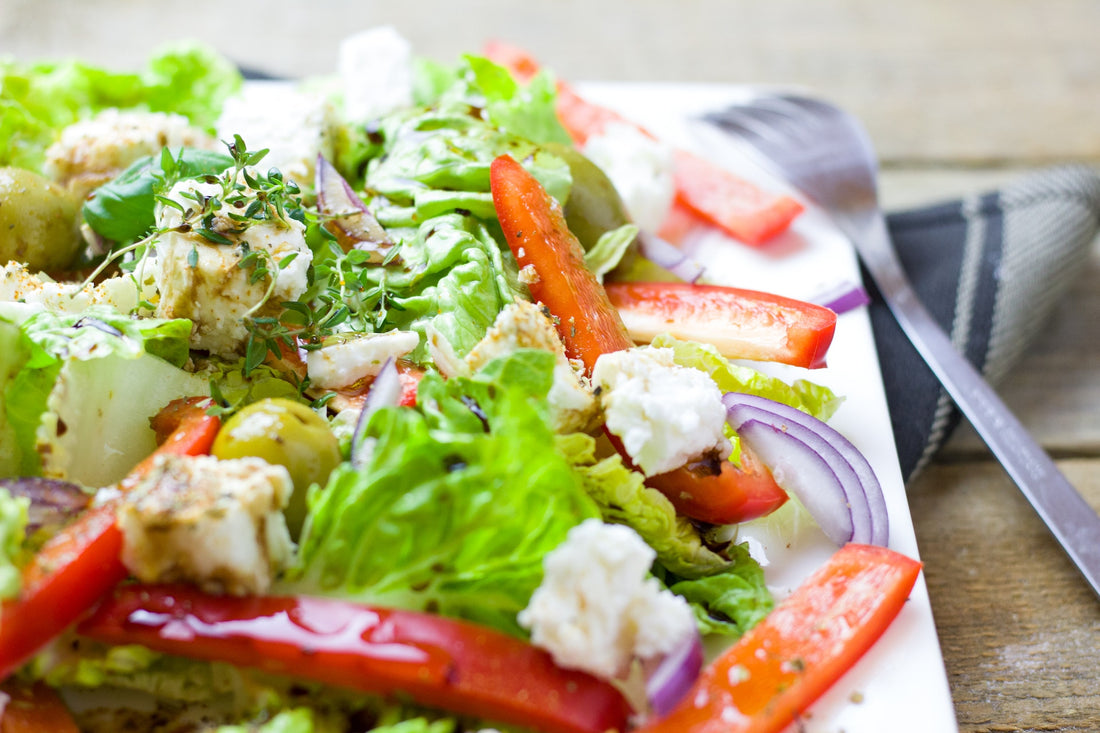
3 Meals to Help Reduce Joint Pain and Arthritis
Share
“One of the most common questions people with arthritis ask is, “Is there a special arthritis diet?’,” reports the Arthritis Foundation. “While there’s no miracle diet for arthritis, many foods can help fight inflammation and improve joint pain and other symptoms.” According to the foundation’s doctors, the best diet — according to the most recent arthritis research — is the Mediterranean Diet (click here for three sample recipes from the Mediterranean Diet!). Whatever diet you personally follow, the following three recipes are delicious and can help reduce joint pain by tackling chronic inflammation!
1. Easy Yerba Mate Latte
Yerba mate grows wild in the forests of South America, and it’s slowly increasing in popularity as a hot beverage here in North America and around the globe. Its notable health compounds include polyphenols (which reduce the risk of numerous common diseases), saponins (which fight inflammation, in turn potentially assisting your immune system) and caffeoyl derivatives (similar to the immunity-boosting antioxidants in other teas).
To put that into context, green tea is well-regarded for its immune system benefits, and one study found yerba mate actually had higher levels of antioxidant activity than green tea!
While yerba mate sounds exotic, you can find it in most tea shops and some grocery stores.
3 tbsp whole milk
1 tbsp loose-leaf yerba mate
1 tsp honey, ideally local and organic
Simmer a cup of water and the milk.
Pour the yerba mate into an in-cup infuser, place in a mug, and add the hot water and milk.
Let the tea steep for 4 to 6 minutes (the longer you steep, the stronger the yerba mate flavor).
Remove the infuser. Add honey to taste (optional). Enjoy this immune-boosting drink!
2. Candied Pistachios with Winter Salad Greens
Just because it’s the winter doesn’t mean you can’t enjoy flavorful, nutritious greens. This salad is handcrafted with winter greens at their peak nutritional value. The crispness of these greens is balanced with the juiciness of oranges (high in immunity-boosting vitamin C and other antioxidants), homemade candied pistachios, and an easy-to-make vinaigrette that’s just bursting with flavor.
The reason this salad is great for helping to reduce joint pain is because of the pistachios themselves. “Multiple studies confirm the role of nuts in an anti-inflammatory diet,” says Dr. José M. Ordovás, in an interview with the Arthritis Foundation. “One study found that over a 15-year period, men and women who consumed the most nuts had a 51% lower risk of dying from an inflammatory disease (like RA) compared with those who ate the fewest nuts. Another study found that subjects with lower levels of vitamin B6 — found in most nuts — had higher levels of inflammatory markers.”
Candied Pistachios
2 tbsp honey
1/8 tsp salt
1/4 tsp cinnamon
1/4 cup raw shelled pistachios
Homemade Vinaigrette
2 tbsp extra-virgin olive oil or avocado oil
2 tbsp white wine vinegar
1 tbsp minced shallot
1 tsp Dijon mustard
1 tsp honey, ideally local and organic
1/2 tsp salt
1/2 tsp pepper
Winter Salad
4 cups mixed seasonal salad greens (e.g., kale, spinach, collards, Swiss chard, rapini, etc.)
2 mandarin oranges, peeled and chopped
1 tsp fresh thyme or oregano leaves
First, make the pistachios by tossing all the ingredients in a frying pan on low heat and simmering for a couple of minutes or until the candied syrup is thick. Pour onto a baking sheet and let them cool to room temperature.
While the pistachios cool, put all the dressing ingredients into a Mason jar or a similar container with a lid. Close, and shake vigorously until well combined. Set aside.
Finally, make the salad. Fill a salad bowl with the winter greens. Top with the oranges and herbs. Garnish with the candied pistachios. Drizzle with the dressing and toss. Enjoy!
3. Bean Bolognese
This bolognese is high in whole grains, plus fiber-rich beans for enhanced gut health. It’s also very rich in protein while being completely vegetarian!
“Some studies have also shown that fiber and fiber-rich foods can lower blood levels of CRP, an inflammatory marker,” report the Arthritis Foundation. Beans are also good for helping to reduce joint pain. “Beans are loaded with fiber and phytonutrients, which help lower CRP, an indicator of inflammation found in the blood. At high levels, CRP could indicate anything from an infection to RA. In a study scientists analyzed the nutrient content of 10 common bean varieties and identified a host of antioxidant and anti-inflammatory compounds. Beans are also an excellent and inexpensive source of protein and have about 15 grams per cup, which is important for muscle health.”
1 14-oz can of your favorite beans, such as kidney beans or pinto beans
2 tbsp extra-virgin olive oil or avocado oil
1 yellow onion, diced
1 medium carrot, peeled and chopped
1 stick of celery, tough ends removed and then chopped
1/2 tsp salt
4-5 cloves of garlic, crushed
1 bay leaf
1/2 cup white wine
1 14-oz. can of diced tomatoes
1/4 cup fresh parsley, minced and divided into two portions
8 oz. whole-wheat fettuccine (or gluten free)
1/2 c freshly grated Parmesan cheese (or a plant-based alternative)
With a fork, take 1/2 cup of the beans and mash them up. Set aside.
In a frying pan, saute the onion, carrot, celery and salt until the vegetables are tender. Toss in the bay leaf, garlic and wine. Raise the heat to a boil and stir constantly until most of the broth in the frying pan has boiled off. Once most of the liquid is gone, add the tomatoes, a couple tablespoons of parsley and the beans you mashed earlier.
Stir for 5-7 minutes then add the rest of the whole beans and stir until they’re heated through.
Now it’s time to cook the pasta! Boil the fettuccine according to its package directions until al dente, then drain.
Serve the pasta topped with the bean sauce and a sprinkling of Parmesan and parsley. Enjoy!
